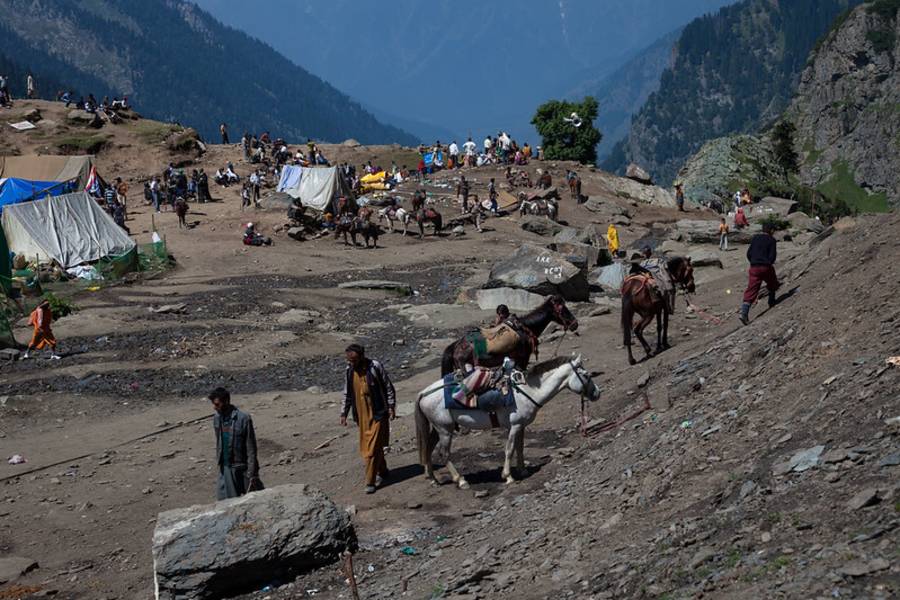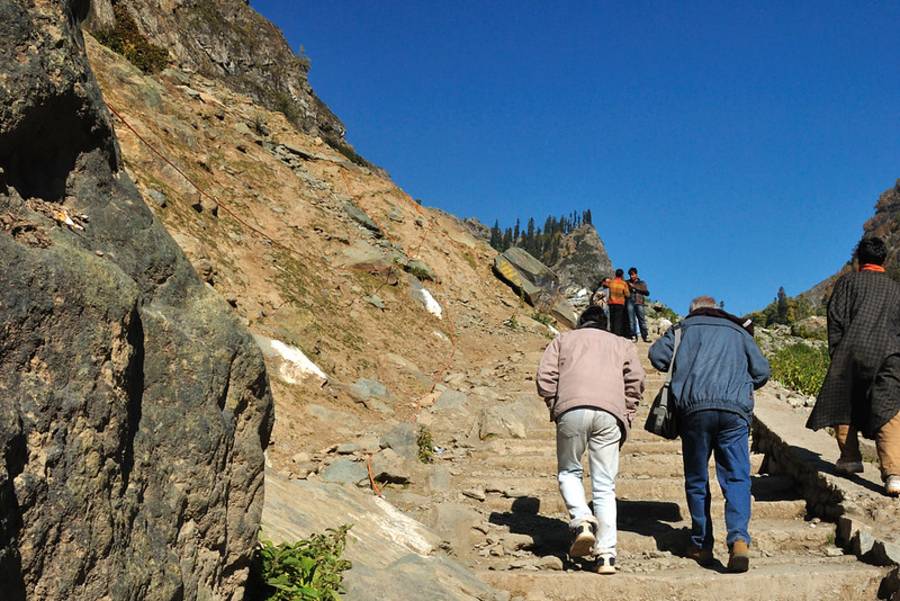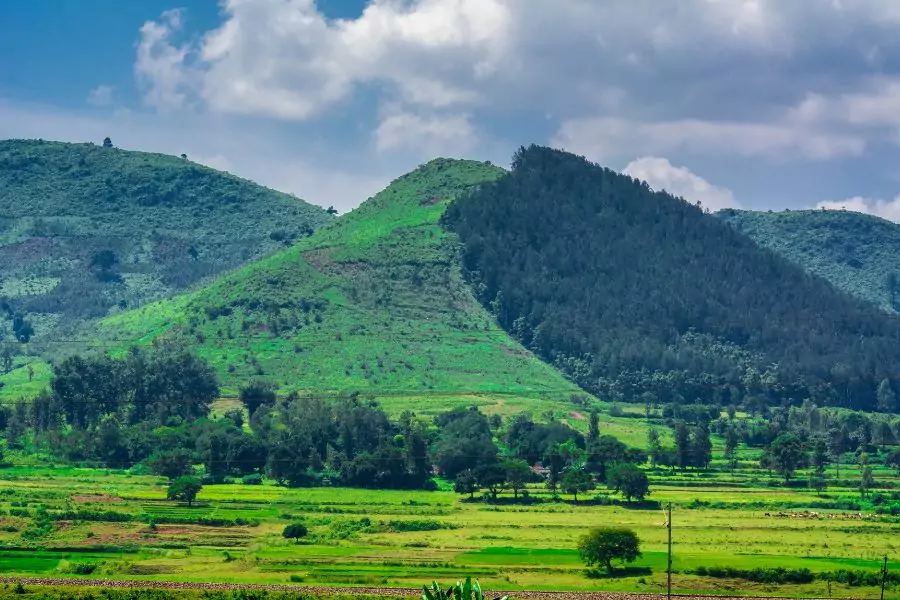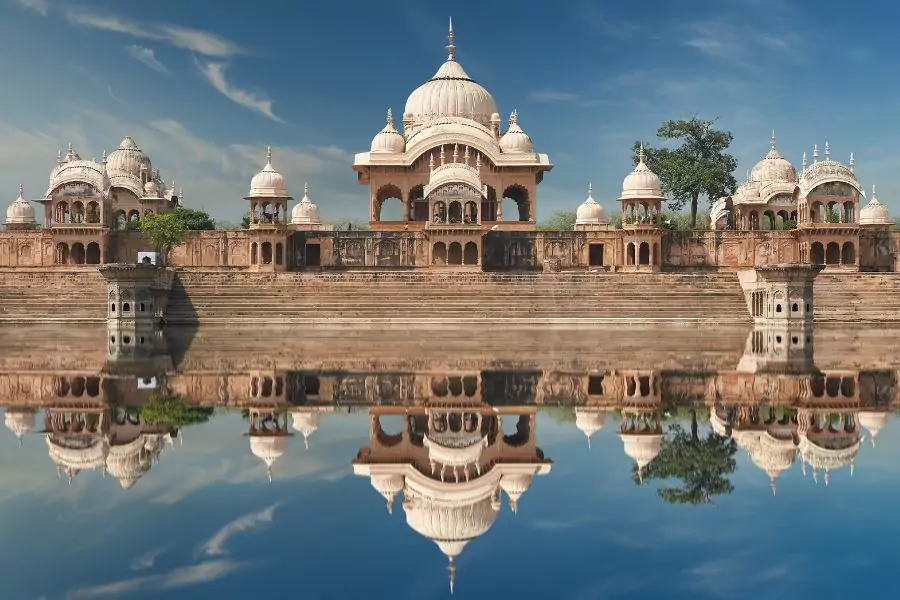Amarnath Yatra
Where is Amarnath?
Amarnath Yatra: Amarnath is located at a distance of 145 km east Srinagar in the state of Jammu and Kashmir. It stands in a glacial valley at an elevation of 4,175 m.
What does it signify?

Amarnath is a highly revered destination for the Hindus. There is an ice Linga here that changes size depending on the seasons. On the Full Moon Day, the Linga measures 6 feet in height. Every year during the months of July/ August, thousands of Hindus from all across the globe pay a visit to the Amarnath Caves.
Bhole Shankar chose the very cave to narrate the secrets of immortality and creation of the Universe to Maa Parvati. At first, Shiva was reluctant to tell the secrets, but finally, he agreed to tell as Maa Parvati insisted. Shiva began looking for a place where no one could overhear the immortal secrets that he was going to disclose to Parvati. And he chose the Amarnath Cave. In his preparation, he left his bull Nandi at Pahalgam, Moon from his hair at Chandawari, and the snakes on the banks of Lake Sheshnag. He left his son Ganesha at Mahagunas Parvat (Mahaganesh Hill). At Panjtarni, he left the five elements namely Earth, Water, Fire, and Sky that constitute the living beings. After leaving behind all these worldly possessions he along with Parvati entered the Holy Amarnath Cave. He made sure that no one was around. He created Kalagni to spread fire all round so that no one was able to hear the immortal truth. Now he started narrating the secret. However, there remained protected an egg that lay beneath a deerskin. It is believed that the pair of pigeons that were born out of the egg became immortal having known the secret of being immortal. Even today numerous pilgrims report seeing the pair of pigeons as they trek along the toilsome route to pay their tributes to the Ice Lingam.
When is the Yatra organized?
The Amarnath Yatra is organized every year during the months of July and August. Jammu and Kashmir Government announces the dates taking into account the weather conditions of the place.
The climatic conditions are very unpredictable. Rainfall and snow may occur at any time and at any place during the trip. There can also be abrupt changes in the temperature. In a short time, sunny weather can turn into rain and snowfall. The temperature may drop down to a minimum of 5 degrees in the negative.
History Of Amarnath Yatra
The Amarnath Yatra is a Hindu pilgrimage to the Amarnath cave, located in the Indian union territory of Jammu and Kashmir. The pilgrimage is undertaken by thousands of devotees every year, who trek to the cave to offer prayers to the ice lingam (a symbol of Lord Shiva) that forms naturally in the cave. The history of the Amarnath Yatra is steeped in legend and mythology, and has been a part of Hindu religious tradition for centuries.
According to Hindu mythology, the Amarnath cave is the place where Lord Shiva revealed the secret of immortality to his wife Parvati. The story goes that Shiva took Parvati to the cave and left behind his Nandi bull, which he had turned into a human form to guard the entrance. Inside the cave, he meditated and revealed the secret of eternal life to Parvati, with a promise that only the pure of heart would be able to find the cave and attain enlightenment.
The Amarnath Yatra is believed to have started in the 13th century, when a Muslim shepherd named Buta Malik is said to have discovered the Amarnath cave. According to the legend, Malik was blessed by Lord Shiva with a bag of coal, which turned out to be a bag of gold when he returned home. Over time, the story of Malik’s blessing spread, and the cave became a site of pilgrimage for Hindus.
The modern history of the Amarnath Yatra can be traced back to the 19th century, when the Dogra king of Jammu and Kashmir, Maharaja Gulab Singh, took control of the region. Under his rule, the pilgrimage was formalized, and facilities such as shelters and food stalls were set up along the route to the cave. In 1947, when India gained independence from British colonial rule, the pilgrimage continued, but with interruptions during periods of political unrest.
In recent years, the Amarnath Yatra has become a subject of controversy due to security concerns and environmental issues. The government of Jammu and Kashmir has taken steps to improve the infrastructure along the pilgrimage route, including building a new road and improving medical facilities. Despite these challenges, the Amarnath Yatra remains an important part of Hindu religious tradition, and thousands of devotees continue to undertake the pilgrimage every year.
Major Attraction of Amarnath Yatra
The Amarnath Yatra is one of the most important Hindu pilgrimages in India, and it is known for its natural beauty and religious significance. Here are some major attractions of the Amarnath Yatra:
Amarnath Cave:
The Amarnath Cave is the primary destination of the Amarnath Yatra. It is located at an altitude of 3,888 meters in the Himalayas and is home to the naturally formed ice lingam, which is a symbol of Lord Shiva. The cave is considered to be one of the holiest shrines in Hinduism.
Scenic Beauty:
The Amarnath Yatra is known for its scenic beauty, as the route to the cave is surrounded by snow-capped mountains, pristine streams, and beautiful meadows. The journey is a visual treat for trekkers and nature lovers.
Pahalgam:
Pahalgam is a picturesque town located on the banks of the Lidder River, which is the starting point of the traditional Amarnath Yatra route. It is a popular tourist destination in Jammu and Kashmir and offers breathtaking views of the surrounding Himalayan peaks.
Baltal:
Baltal is the base camp for the shorter and more challenging Amarnath Yatra route. It is located on the banks of the Sindh River and offers stunning views of the Zoji La Pass and the snow-capped peaks of the Himalayas.
Other Religious Sites:
The Amarnath Yatra also offers the opportunity to visit other important religious sites in the region, such as the Shankaracharya Temple, the Martand Sun Temple, and the Hazratbal Shrine.
Overall, the Amarnath Yatra is a unique combination of natural beauty and religious significance, making it a once-in-a-lifetime experience for pilgrims and tourists alike.
How to reach
Reaching Amarnath Cave, which is located in the northern Indian state of Jammu and Kashmir, requires a combination of travel modes, including air, rail, and road. Here are the options for reaching Amarnath Yatra:
- By Air: The nearest airport to the Amarnath Yatra is the Srinagar International Airport, which is located about 70 km away from the base camp of the trek. The airport is well-connected to major cities in India such as Delhi, Mumbai, and Bangalore. From the airport, one can hire a taxi or take a bus to reach the base camp of the Amarnath Yatra.
- By Rail: The nearest railway station to the Amarnath Yatra is Jammu Tawi railway station, which is located about 300 km from the base camp. From the railway station, one can hire a taxi or take a bus to reach the base camp.
- By Road: The base camp of the Amarnath Yatra is located in Pahalgam, which is well-connected by road to major cities in Jammu and Kashmir. One can hire a taxi or take a bus from Srinagar, Jammu, or other nearby towns to reach Pahalgam. From Pahalgam, one can take a pony or walk to the Amarnath Cave.
Note that the Amarnath Yatra is open only during the summer months from July to September, and the route to the Amarnath Cave is accessible only by foot, horse, or helicopter. The trek to the cave is physically challenging and requires prior fitness preparation. Therefore, it is recommended that pilgrims consult a doctor before undertaking the journey. Additionally, due to security concerns, it is essential to obtain the necessary permissions and follow the guidelines issued by the authorities for a safe and secure journey.
Best time to visit
The best time to visit Amarnath Yatra is during the summer months of July to September. During this period, the weather in the region is relatively stable, and the route to the Amarnath Cave is accessible. The cave is open for a limited period each year during this time as it is covered in snow for most of the year.
The temperatures during this period range from 15 to 20 degrees Celsius during the day and drop to 5 to 10 degrees Celsius at night. The weather is generally clear, with occasional light rains. This makes for a comfortable trek to the cave, with clear views of the surrounding Himalayan peaks.
It is important to note that the Amarnath Yatra attracts a large number of pilgrims and tourists during this period, and the route to the cave can get crowded. Therefore, it is advisable to plan and book the trip in advance, to avoid any last-minute hassles.
It is also important to note that the Amarnath Yatra is a physically challenging journey, and it is recommended that pilgrims undertake proper fitness preparation before embarking on the trek. Additionally, due to security concerns, it is essential to obtain the necessary permissions and follow the guidelines issued by the authorities for a safe and secure journey.



